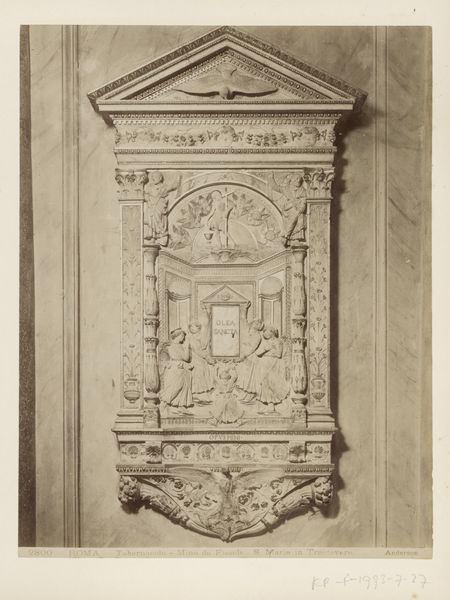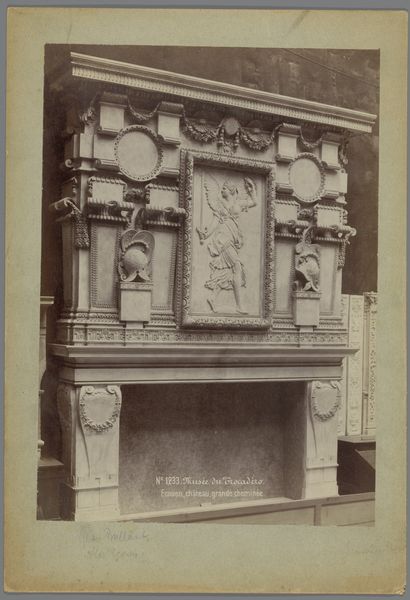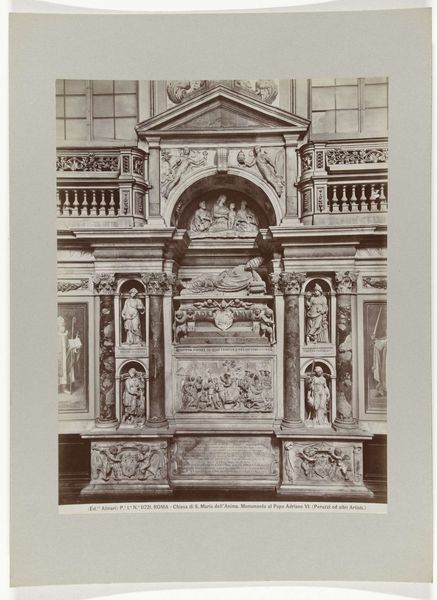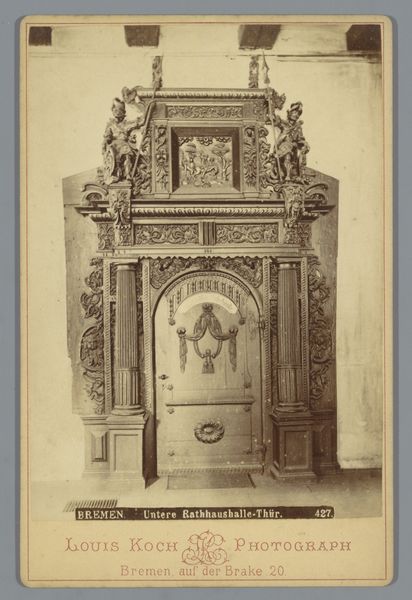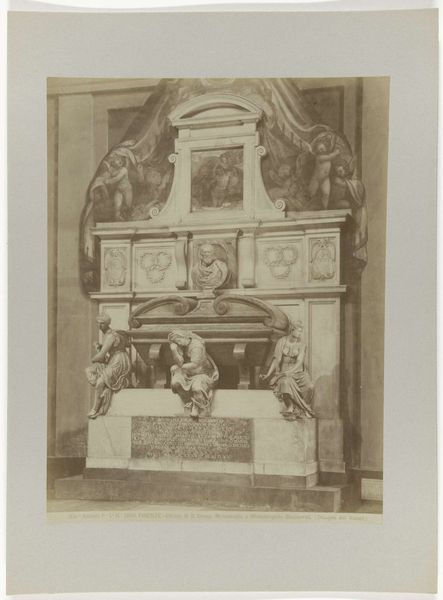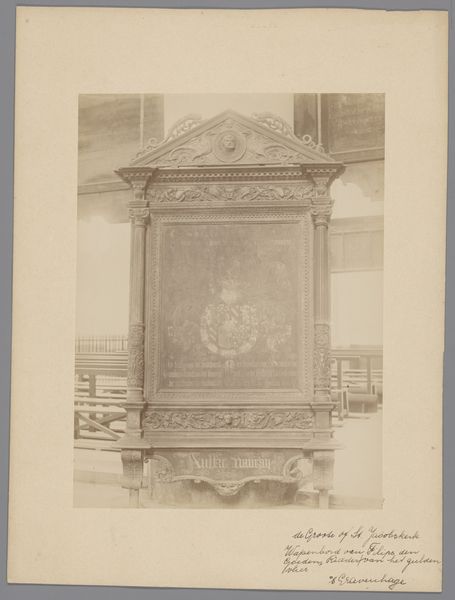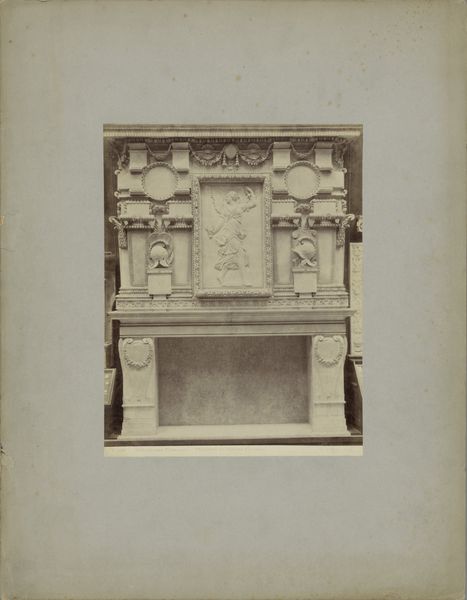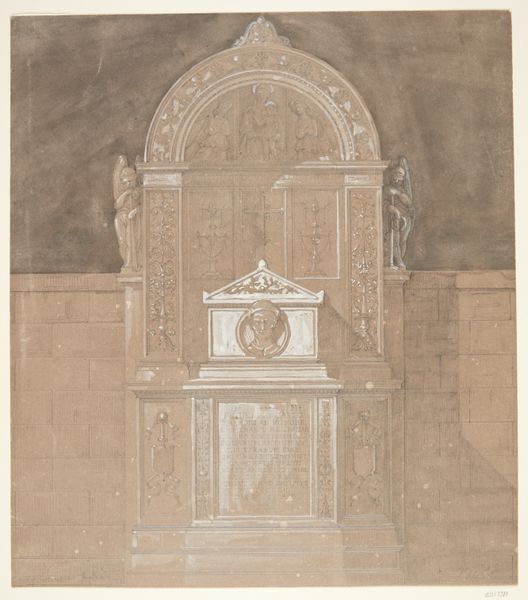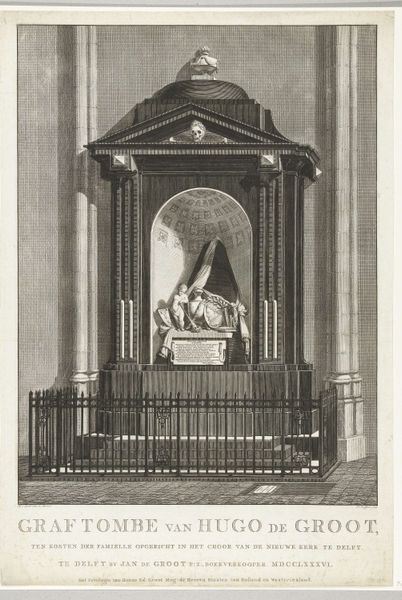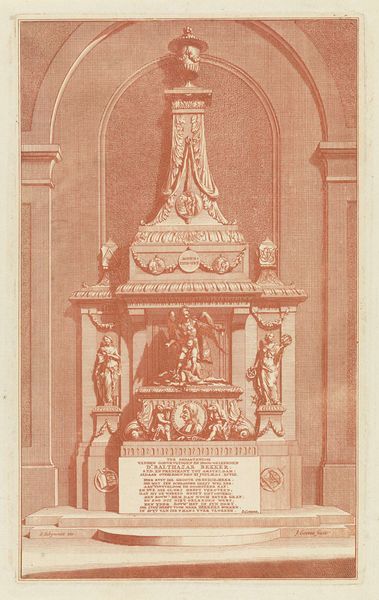
Grafmonument van kardinaal Cristoforo della Rovere in de Santa Maria del Popolo te Rome c. 1857 - 1875
0:00
0:00
jamesanderson
Rijksmuseum
bronze, photography, sculpture, marble
#
portrait
#
bronze
#
photography
#
sculpture
#
history-painting
#
marble
Dimensions: height 258 mm, width 203 mm
Copyright: Rijks Museum: Open Domain
Curator: The work before us is a photograph of the Grafmonument van kardinaal Cristoforo della Rovere in de Santa Maria del Popolo te Rome, taken by James Anderson, sometime between 1857 and 1875. Editor: Woah, immediately I get this deep sense of peace and solemn quiet. The soft sepia tones, the intricate carving… it’s like stepping back into a hushed, sacred space. Curator: Anderson, as a photographer, was deeply interested in documenting artworks and architecture, and we should understand his pictures in their historical context. His images weren't just documentation, but often commissioned artworks, in a world where photography played an increasingly large role in art history itself. This image captures not just a monument, but its photographic representation. Editor: Absolutely, this image transcends documentation; it feels imbued with reverence. See the light catching the marble? And those angles! They give a sense of almost holy geometry... I am picturing the sculptor agonizing over every curve, every cherub's wing. It makes you think about mortality, doesn’t it? The cardinal is laid out, in stone now himself, waiting... Curator: Precisely. The Cardinal della Rovere was part of a very powerful family in the 15th and 16th centuries and played an important role in papal politics. A grand tomb wasn't just a memorial, it was also a statement of power and influence, reflecting both the family’s status and their continuing legacy through the church. Editor: Looking at the detailing, you sense a yearning for eternity, a desire to carve out a space in time... or beyond it! All the decoration, the details in marble are stunning. Did the photograph allow more people to contemplate the cardinal's legacy? To stand before the grand monument from afar? Curator: It is quite possible, although these images were often circulated amongst art historians and the wealthy classes at the time. The wide circulation among popular audiences hadn't quite taken off yet, but that role of democratizing art access became crucial soon afterwards, particularly through postcards. Editor: Thinking about those postcards now puts everything in context. Almost like souvenirs… Death goes to the masses! So many interpretations and levels to the original carving and monument; amazing the conversation all born from a picture. Curator: A fascinating collision of artistry and technology reflecting faith, power, and the evolving relationship between representation and reality in the Victorian era. Editor: A fitting end that feels right; makes me reflect about legacy... What will be captured about our time now for others to witness someday? Deep.
Comments
No comments
Be the first to comment and join the conversation on the ultimate creative platform.
